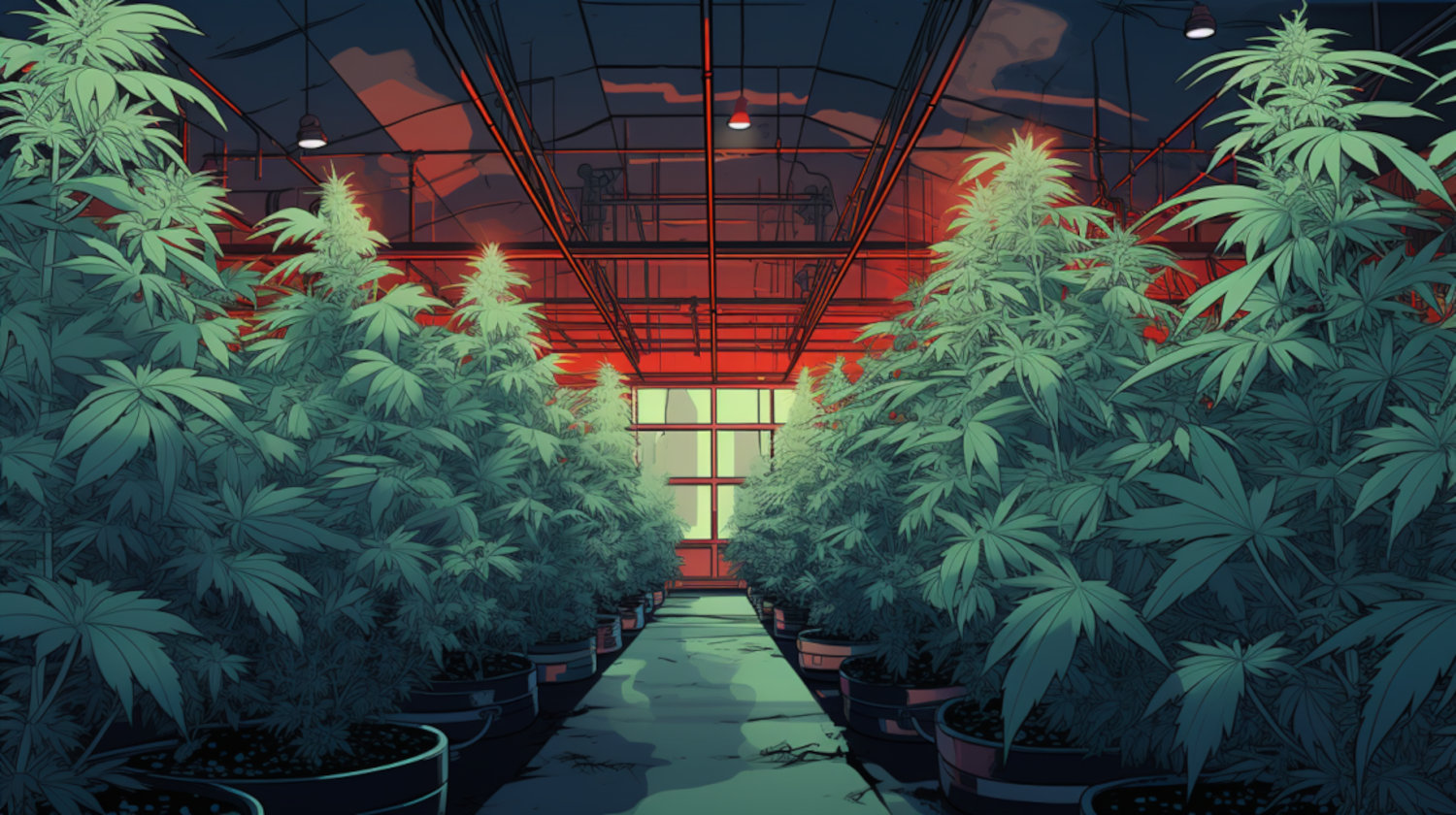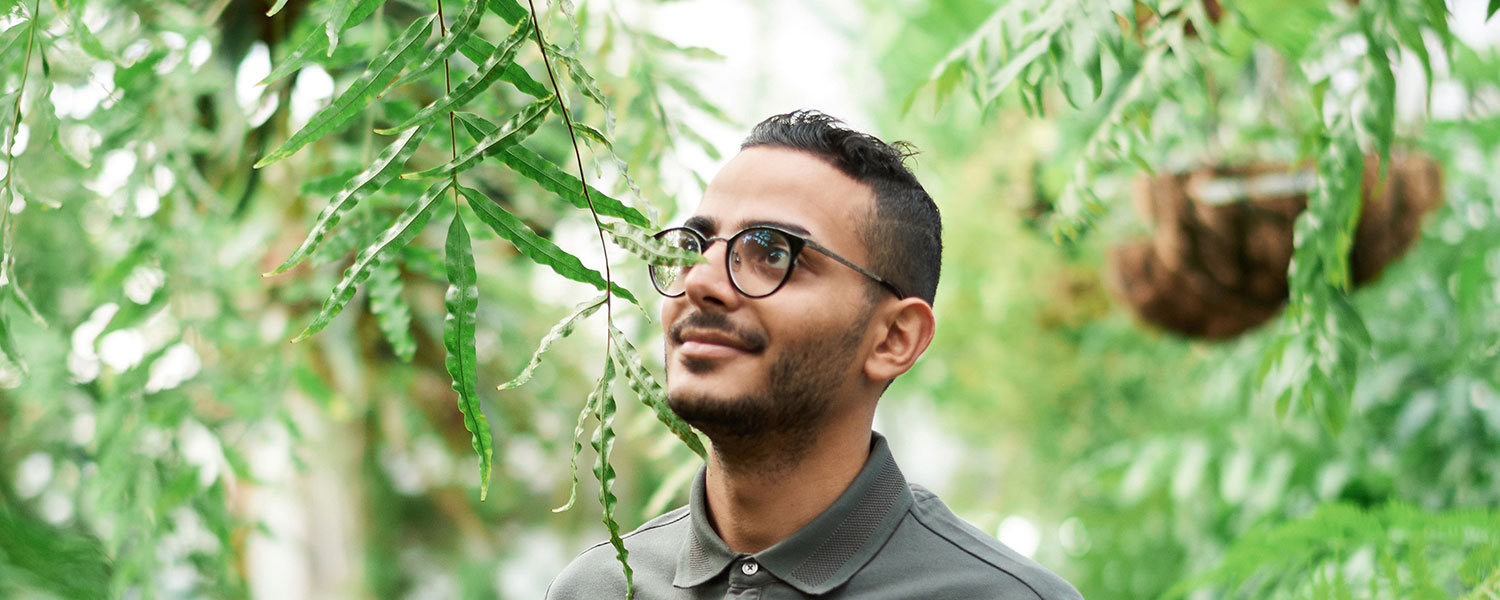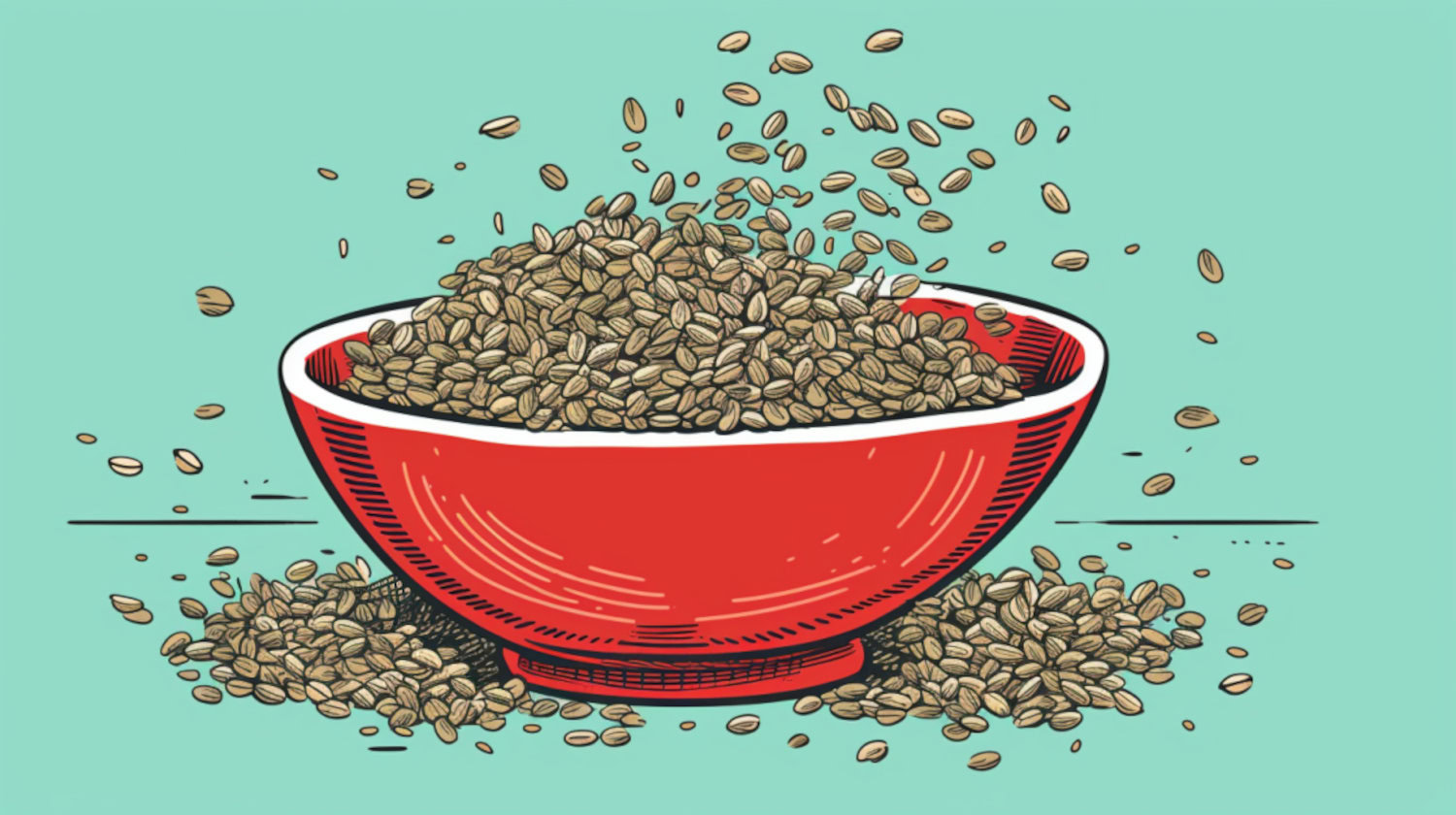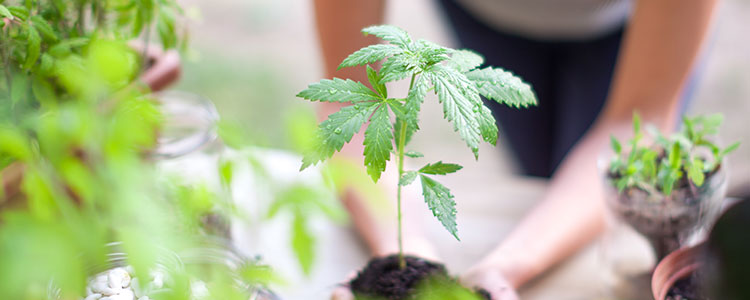In This Article
- How Can You Tell When Cannabis Leaves Are Curling Down?
- What Causes Cannabis Leaves Curling Up?
- Overwatering or Underwatering
- Over-Fertilizing
- Nutrient Deficiencies
- Pests
- Windburn and Lightburn
- Soil and Genetics
- Heat, Humidity, and Cold Stress
- How to Stop Cannabis Leaves Curling Up on the Edges
- Bulk Up on Nutrients and Prevent Over-Fertilizing
- Get Rid of Pesky Pests
- Tweak the Humidity and Lighting
- Let the Breeze Blow
- Water Suitably
- How to Prevent Cannabis Leaves Curling Down
- What to Do About Cannabis Leaves Curling Down During Flowering
Have you ever thought about growing your own cannabis at home? This rewarding process will allow you to control how much you yield, as well as potentially meddle with the genetics of specific strains and crossbreed to develop your very own strains.
A cost-saving alternative to purchasing your cannabis at a licensed dispensary, home-growing means you will never run out of the green stuff, control the environment in which the plants thrive, and even use your harvest to produce mind-blowing extracts! However, home cannabis cultivation comes with its challenges, such as low humidity leaf curl.
Cannabis leaves curling down or up is a problem that many novice growers face. Fortunately, it's preventable and curable. By diagnosing and addressing the problem, you can salvage your buds and make sure they yield the maximum amount of cannabinoids, flavonoids, and terpenes.
So, why are your cannabis leaves curling down?
How Can You Tell When Cannabis Leaves Are Curling Down?
Some cannabis growers may describe a plant with cannabis leaves curling up as “canoeing” or “tacoing.” You can usually identify leaves curling up on the edges when you notice that the leaf tips start facing the light more than usual in a desperate attempt to revive itself. Discoloration may also be present. Conversely, leaves curling down during flowering may occur, with problems resulting in brittle and dull leaves (or even plant death) if left untreated.
All cannabis leaves, regardless of strain or origins, should exhibit a flat and open appearance. Leaf curling is an obvious sign of suffering and an indicator that your plant wants some extra attention. Scanning your plants regularly is a good way of determining the presence of leaf curl problems. Since leaves play a pivotal role in photosynthesis - the process by which plants use sunlight, water, and carbon dioxide to create oxygen and energy in the form of sugar - it's your job to make sure they don't endure stress.
Some tell-tale signs to look out for include:
- Leaf curling (up or down)
- Leaf discoloration
- Leaf tips pointing toward the light
- Brittle-to-the-touch leaves
Cannabis leaves curling down is not the same as normal shedding of leaves or wilting leaves. Wilting or drooping leaves may indicate overwatering. If you overindulge your plant with water, root waterlogging will occur, meaning that the soil is missing out on sufficient oxygen. A cannabis plant’s roots absorb important nutrients; therefore, if they start rotting, leaf “wilting” and “clawing” may occur.
Structural or functional leaf problems can severely hinder a cannabis plant's growth and development. The sooner you focus on fixing the problem, the lower the chances of leaf curling worsening, and the better the chances of your plant not just surviving but thriving.
So, let's find out more about how you can “leaf” this obstacle behind to ensure vibrant foliage and potent harvests.
What Causes Cannabis Leaves Curling Up?
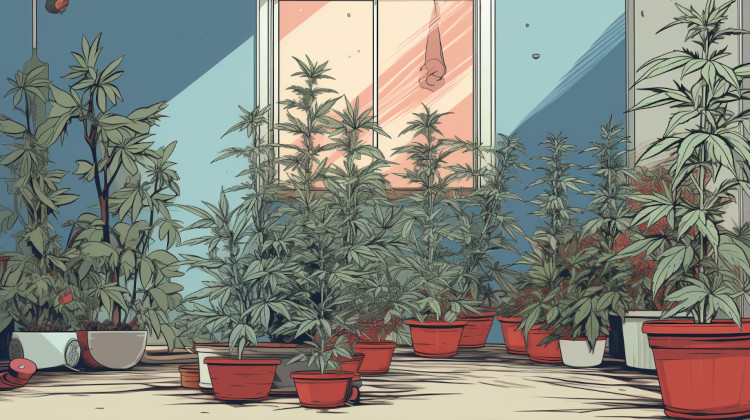
In most cases involving cannabis leaves curling up or down, there is no singular cause. Numerous factors come into play, and although leaf curling can be a nuisance, learning how to tackle this challenge can help you become a better and more attentive cannabis cultivator.
The manifestation of leaf curling is usually due to the following preventable factors:
Overwatering or Underwatering
Observe the soil and the cannabis plant's leaves. Soil that is dry to one inch deep (or slightly deeper) may cause slow-developing leaves that appear droopy. Alternatively, if the soil feels moist, you might be overwatering your cannabis plant.
Over-Fertilizing
Fertilizer can work wonders for cannabis, but too much is a no-go. It's also best to avoid applying large amounts of fertilizer to young plants in their early development phase. This will disrupt the plant's defense mechanism and send it into overdrive, resulting in extreme stress that may contribute to leaves curling down or up. Adding excess nitrogen, potassium, or phosphorus to cannabis during the critical flowering stage means that the leaves will be susceptible to curling and burning. Over-fertilizing may also cause chlorosis, which is a lack of the vibrant pigment chlorophyll that gives cannabis its green color.
Nutrient Deficiencies
Humans are fairly similar to cannabis plants in the sense that we require essential nutrients to survive and blossom into the best version of ourselves. Curly cannabis leaves may occur if the plant is lacking the following nutrients:
- Nitrogen (N): A cannabis plant will not survive without nitrogen, which is a building block for proteins and photosynthesis. Nitrogen deficiency stunts plant growth, causing cannabis leaves to curl downwards and turn pale.
- Potassium (K): Curling and yellowing leaf edges are two adverse effects of potassium deficiency. Potassium helps regulate stomatal opening and closing. Consequently, this contributes to the enhanced exchange of carbon dioxide, oxygen, and water vapor.
- Magnesium (Mg): If you notice yellowing between cannabis leaf veins, your plant may need some more magnesium. Poor growth and leaf curling are likely to occur in plants with magnesium deficiency, too.
- Calcium (Ca): A lack of calcium will not only lead to curling leaves but also to potential cell and tissue death (necrosis) and misshapen leaves.
- Phosphorus: Cannabis plants with purple stems may be battling a Phosphorus deficiency. This mineral stimulates root development, improves flower formation, increases disease resistance, and amplifies stalk and stem strength.
Pests
It's not just humans who love cannabis but also plenty of pests. Unfortunately, you'll need to deprive pests of access to your cannabis crops if you want to yield anything more than curly, yellow, hole-ridden leaves that lack any kind of potency. Two of the most common pests associated with cannabis leaves curling down and up are aphids and mites. Since these pests usually feast on nutrients beneath the leaves, spotting them can sometimes be challenging. However, pest infestation means death for cannabis, so make it your mission to keep critters at bay.
Windburn and Lightburn
Cannabis plants absorb the CO2 surrounding them within as little as one minute, so adequate airflow in the form of expertly crafted fans is paramount for proper yields. However, too much wind can cause your cannabis plant to defend itself, leading to inward leaf curling. Plus, if your plant constantly faces the light, the leaves may become crispy and turn white or yellow.
Soil and Genetics
Plants in poor soil will express dissatisfaction by curling their leaves in the direction of the ground, even if they receive ample water. To prevent cannabis leaves curling down, find a soil supplier that offers products with suitable drainage, water retention, and texture. Consider plant genetics, too, because the leaf and bud quality of its offspring depends on the parents.
Heat, Humidity, and Cold Stress
Heat stress may occur if you grow plants in indoor or outdoor spaces with temperatures exceeding the optimal growing temperature of between 82℉ and 86℉. Low humidity leaf curl may arise if the relative humidity (RH) is below 40%. If you reside in a state where temperatures rarely drop below 50℉, you shouldn't have to worry about cold stress. Although a little bit of cool air can give your plant a dazzling purple hue, prolonged cold exposure will result in loose and excessively “leafy” flowers. Cold stress and high RH may also cause Botrytis –or bud rot.
How to Stop Cannabis Leaves Curling Up on the Edges
Take a look at your growing environment. Is it ideal, or are there red flags that you are overlooking? If you cannot give cannabis TLC when it needs it, expect that you might come home one day to find leaves curling up on the edges.
Cannabis growing tips to stop leaves curling up include:
Bulk Up on Nutrients and Prevent Over-Fertilizing
Stop cannabis leaves curling up quickly by keeping phosphorus and potassium fertilization at a minimum during flowering. Limit weekly nutrient applications to 1-2 times and consider a flush product if overconsumption is an issue.
Get Rid of Pesky Pests
Transfer your plants to an outdoor space and spray with Essentria IC3, insecticidal soaps, or organic soil bacterium insecticides like Spinosad to discourage cannabis pests.
Tweak the Humidity and Lighting
Stabilize humidity and use the best cannabis lights for home growing. Red and blue lights promote bud and flower production. If indoor lighting is limited, reduce the intensity and position light fixtures further away from plants.
Let the Breeze Blow
Prevent windburn-related leaf curling by reducing the speed of your fan set-up, experimenting with new angles, and investing in windbreaks (if you are an outdoor grower).
Water Suitably
Use a moisture meter to measure water saturation all the way down to the root. If overwatering is causing cannabis leaves to curl up or down, wait until the plant absorbs the existing water. Should the soil remain soggy after a few days, replace it with unwatered, organic soil. Alternatively, top up underwatered plants.
How to Prevent Cannabis Leaves Curling Down
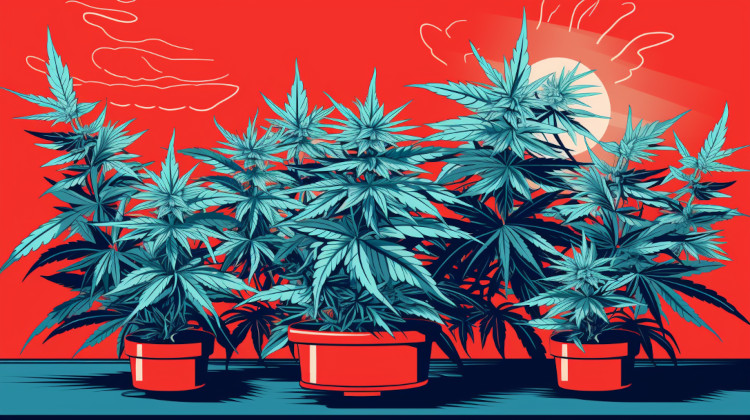
If your plant is currently healthy and you simply want to eliminate the risk of cannabis leaves curling down or leaves curling up on the edges, bookmark the following general best practices:
- Examine the Plants Regularly - Inspections will help you detect a problem before it festers and destroys your entire plant. Always inspect in a well-lit environment and use a magnifying glass to clearly observe the trichomes and leaves.
- Carefully Monitor Light, Heat, Temperature, and Wind - Maintain a temperature of 64℉-70℉ and keep the pH well-balanced (5.8-6.2). A relative humidity of 55%-65% works well for most strains, as does a light breeze and 50 watts of LED in sites stretching over one square foot.
- Prevent Micro Deficiency - Nutrient intake is paramount for healthy plants. Avoid micro deficiency by feeding your cannabis plants plenty of calcium, iron, and magnesium.
- Choose the Right Soil - The best soil for growing cannabis is sandy loam mixed with compost. However, some growers also choose well-draining mixtures that contain coco coir, perlite, and vermiculite. Water it once per day or every few days.
Aside from the quality, potency, and overall health aspects, leaf curling will also negatively impact a cannabis plant’s aesthetic allure. Before you can deal with the issue, you must know what is causing the problem. From there, you can focus on a specific solution that will stop leaf curling from progressing, thus saving you effort, resources, time, and disappointment!
What to Do About Cannabis Leaves Curling Down During Flowering
The idea of finding your cannabis leaves curling down during flowering is nightmarish, but the good news is that your crop dreams can still come true. Curling leaves are reversible, but only if you act fast. Cannabis plants try to retain moisture by curling up at the tip, so if this is happening during flowering, your plant is hinting for a drink! If the leaf is curling downwards, you are probably overfeeding the plant and may want to cut back.
Since the flowering phase is one of the most time-sensitive cannabis plant stages, it's worth implementing the following tips instantly upon discovering a curly leaf:
- Adjust Temperature and Humidity
Grow room temperature should not exceed 70-80°F during the day and should rest at around 65–80°F during the night. Start with 40%-50% RH and reduce by 10%-20% during flowering.
- Apply the Correct Nutrients
Vegetative stage plants need more nitrogen but less phosphorus and potassium. Flowering plants need more phosphorus and potassium but less nitrogen.
- Lighting Angle and Schedule
Only use high-quality lights with a desirable spectrum to bathe your plants in 12 hours of light before concealing them in darkness for the next 12 hours. Don't position lights too close to the plant, as this may cause lightburn.
- Amplify Oxygen In Root Zone
Use breathable cloth pots to increase root zone oxygenation in your root zone. Products containing microbial nutrients may boost root mass.
- Snip off the Curly Leaves
Use a pair of high-quality bud trimming scissors to remove curling or wilted leaves. This will help your plants to channel their energy into fresh growth, resulting in bigger harvests.
Understanding the root cause of leaves curling down during flowering will set you up for successful future growing endeavors. The knowledge you gain from “curly” scenarios will serve as a reminder that cannabis plants need extra love and affection from start to finish. Plus, you'll brush up on your inspecting skills and be well-equipped to proactively detect early signs of stress that may otherwise lead to more serious problems later down the line.
The information in this article and any included images or charts are for educational purposes only. This information is neither a substitute for, nor does it replace, professional legal advice or medical advice, diagnosis, or treatment. If you have any concerns or questions about laws, regulations, or your health, you should always consult with an attorney, physician or other licensed professional.

